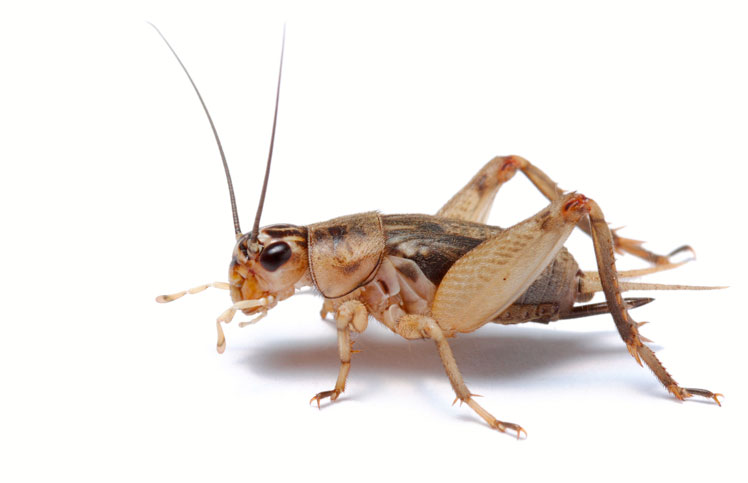Cricket Powder Protein Review
When most people think of protein powder, they think of dairy, egg, or plant-based protein. But new protein powder supplements are hitting the market with a surprising ingredient: powdered cricket.
They’re called cricket powder protein supplements and they’re made using ground up extract of the standard cricket. Find out everything you need to know about this crazy new health trend today!
What is Cricket Powder?
Cricket powder is protein powder derived from crickets – yes, it’s exactly what it sounds like.
In case eating crickets is too bizarre for you, consider the fact that the UN released a report in 2013 identifying almost 2,000 types of edible insect species. The cricket was one of those insects.
The UN further identified crickets as being a viable food source because they’re rich with protein, fiber, vitamins, minerals, and healthy fats.
The idea behind cricket protein powder is that you can make a natural and nutritious protein powder using only the extract of ground-up crickets. It’s more than just a protein powder: it’s a nutritional powder rich with vitamins like calcium and iron as well as vitamin B6, B12, omega-3s, omega-6s, and many types of essential amino acids.
Cricket powder is also gluten-free and goes through minimal processing – two things that are desirable for today’s health-conscious consumers. Crickets are also paleo-friendly and have minimal environmental impact.
Cricket Flours Protein Supplements
The main manufacturer leading the push for cricket powder protein supplements is called Cricket Flours. That company was founded in 2014 in the United States.
According to the company’s official website, the cricket flour is “sourced here in the USA and is made with premium fine grain milling processes for increased shelf-life, nutrition, and consistency.”
The company was reportedly launched after the two founders started looking for alternative sources of protein that were gluten-free and had minimal processing and additivies.
The company was founded by Charles B. Wilson and Omar Ellis. It’s currently based in Portland, Oregon.
Cricket Flour sells a total of 12 different products, including 10 types of protein powder in different flavors and sizes as well as two books.
Products include:
100% Pure Cricket Flour: $15.25 for a 1/4 pound, $27.50 for a 1/2 pound, and $43.27 for a 1 pound package.
Cricket Flour – Peruvian Chocolate and Chocolate Peanut Butter Flavors: $13.99 for 1/4 pound, $26.25 for a 1/2 pound, and $46.25 for 1 pound packages.
All Purpose Baking Cricket Flour: $19.25
All Cricket No BULL: $4.99 for the digital PDF copy or $15.99 for a hardcopy edition signed by the author
The company lists a number of different cricket powder recipes at its website. You can view those recipes here.
Some of the recipes are made using the 100% pure cricket flour or the flavored variations, while others involve baking with the All Purpose Baking Cricket Flour. Sample recipes include:
— Cricket Flour Spiced French Toast
— Tropical Protein Shake
— Spicy Baked Peppers
— Vanilla Chocolate Chip Cookies
— Cricket Flour Pizza
— Cricket Flour Pancakes
Other Cricket Powder Companies
FastCompany.com claims that edible insects are already a $20 million industry in the United States.
Some of the key players in that industry include The Black Ant, which is a New York City-based restaurant that sells sautéed grasshoppers, among other insect delicacies.
There’s also a company called Chapul that recently appeared on Shark Tank, where they received a $50,000 investment from Mark Cuban. Chapul makes gourmet cricket bars in flavors like coconut-ginger-lime. Each bar sells for approximately $2 to $3.
Cricket powder companies are often fuelled by eco-friendly consumers. One report from Exo Protein, another cricket flour supplement maker, claimed that crickets are a 20 times more efficient protein source than cattle. Crickets produce 80% less methane than cattle.
Crickets are also the best source of protein based on 100 gram servings: sirloin beef has 29% protein per serving, dried beef has 43% protein, chicken has 31%, and dried cricket has 69%.
Ultimately, that means you get about 13 grams of protein for every 100 grams of cricket you eat (you get about 7 grams of protein in an egg). There are also valuable BCAAs, which enhance recovery after a workout.
Paleo and gluten-free dieters are also “fuelling the revolution” if you listen to the sales copy on cricket powder supplement websites.
Frequently Asked Questions About Cricket Powder
It’s normal to be curious about cricket powder – it’s a weird concept. Here are some of the frequently asked questions people have about cricket powder protein supplements:
— How is it made? Cricket flour is made by milling dead crickets, which leads to a coarse powder. The dead crickets are whole when they go through the milling process, which manufacturers claim leads to a higher nutritional profile.
— Can you be allergic? Yes, some people are allergic to crickets. If you’re allergic to crustacean shellfish, then you may also be allergic to crickets (both creatures are arthropods).
— How are the crickets killed? Crickets are exposed to cold temperatures. During this exposure, they naturally enter a period of stasis (they’re coldblooded). Once the crickets are in inactive stasis, they’re frozen further.
— Are they vegetarian or vegan-friendly? Eating cricket powder protein supplements involves eating a dead animal – even if that animal is an insect, that’s not considered vegetarian or vegan-friendly. Nevertheless, some vegetarians or quasi-vegetarians appreciate the eco-friendly nature of crickets (they require 1/10th of the water as beef).









